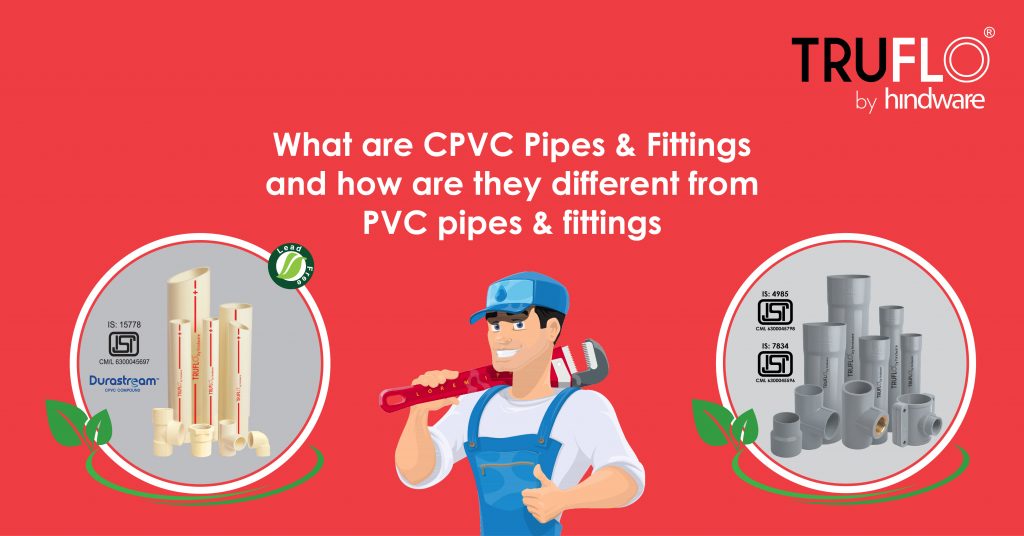What are CPVC Pipes & Fittings and how are they different from PVC pipes & fittings?

When it comes to construction what comes to mind is water and sewerage systems. This is as, if not more, important as the other aspects of a project. Plumbing and piping, and understanding the materials involved on the creation of the pipes and fittings, is crucial for ensuring long-term performance and safety. There are various options available. After much research and experimentation, CPVC (Chlorinated Polyvinyl Chloride) and PVC (Polyvinyl Chloride) pipes have come up tops and are commonly used in both residential and commercial settings. While they may seem similar by name, the two types of pipes have distinct properties and applications. here, let us study and highlight the key differences between CPVC and PVC pipe fittings, for making informed decisions on future projects
CPVC (Chlorinated Polyvinyl Chloride) and PVC (Polyvinyl Chloride) pipe fittings are both commonly used in plumbing and construction, but they have distinct differences in terms of properties, applications and temperature resistance. A look at the content
CPVC Pipe Fitting Material: CPVC is a thermoplastic produced by chlorinating PVC resin.
It has a higher chlorine content than PVC, which enhances its properties.
Temperature Resistance: CPVC is suitable for both hot and cold-water applications because can handle higher temperatures, up to 93°C (Short Term)
PVC is primarily used for cold water applications because it can handle temperatures up to 60°C.
Applications: CPVC pipes are used for hot and cold-water distribution in residential, commercial, and industrial buildings, Chemical processing plants, food and beverage processing, and other environments where higher temperature tolerance is required. PVC pipes are used for cold water distribution, in residential and commercial buildings, Irrigation systems, pool and spa systems and other low-temperature applications
Cost: CPVC is a little more expensive than PVC due to its enhanced properties as per the application.
Material: PVC is a thermoplastic made from polymerizing vinyl chloride. CPVC is Chlorinated Polyvinyl Chloride) Both can be used in various applications due to the versatility and cost-effectiveness.
Briefly the key differences are:
Temperature Tolerance: CPVC:Higher temperature tolerance (up to 93°C).
PVC: Lower temperature tolerance (up to 60°C).
Applications: CPVC: Suitable for hot and cold water, industrial applications.
PVC: Primarily for cold water, and low-temperature applications.
Cost: CPVC is more expensive due to enhanced properties whereas PVC is more economical and widely used depending on the application.
Colour: CPVC: Typically, a light beige or cream colour (Ivory). PVC: Grey.
Choosing between CPVC and PVC depends on the specific requirements of your project, such as CPVC is used for internal plumbing and PVC is used to transport water from one point to another at high pressure.
There are many renowned manufacturers of CPVC and PVC pipes but TRUFLO by Hindware has an edge over other manufacturers, because we specialize in manufacturing a wide range of piping systems like UPVC, UGD, SWR and are known for their quality, reliability and adherence to international standards. TRUFLO Pipes are strong and made from high-quality materials to ensure strength and durability. They are leak-proof and are available in a in various sizes and types to meet different application and consumer needs. TRUFLO pipes come with a warranty, reflecting the company’s confidence in their commitment to product’s quality

